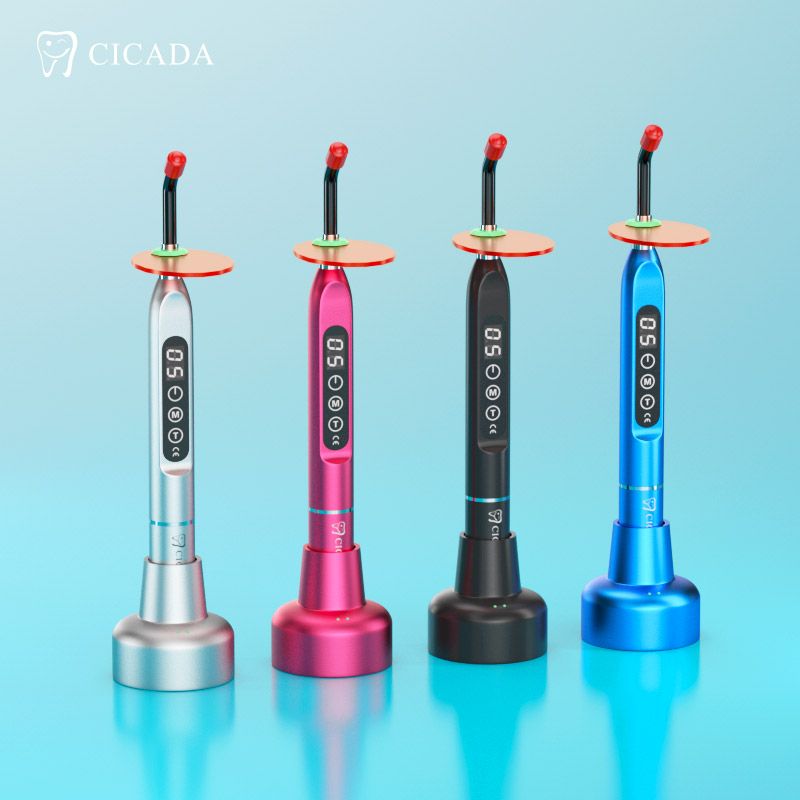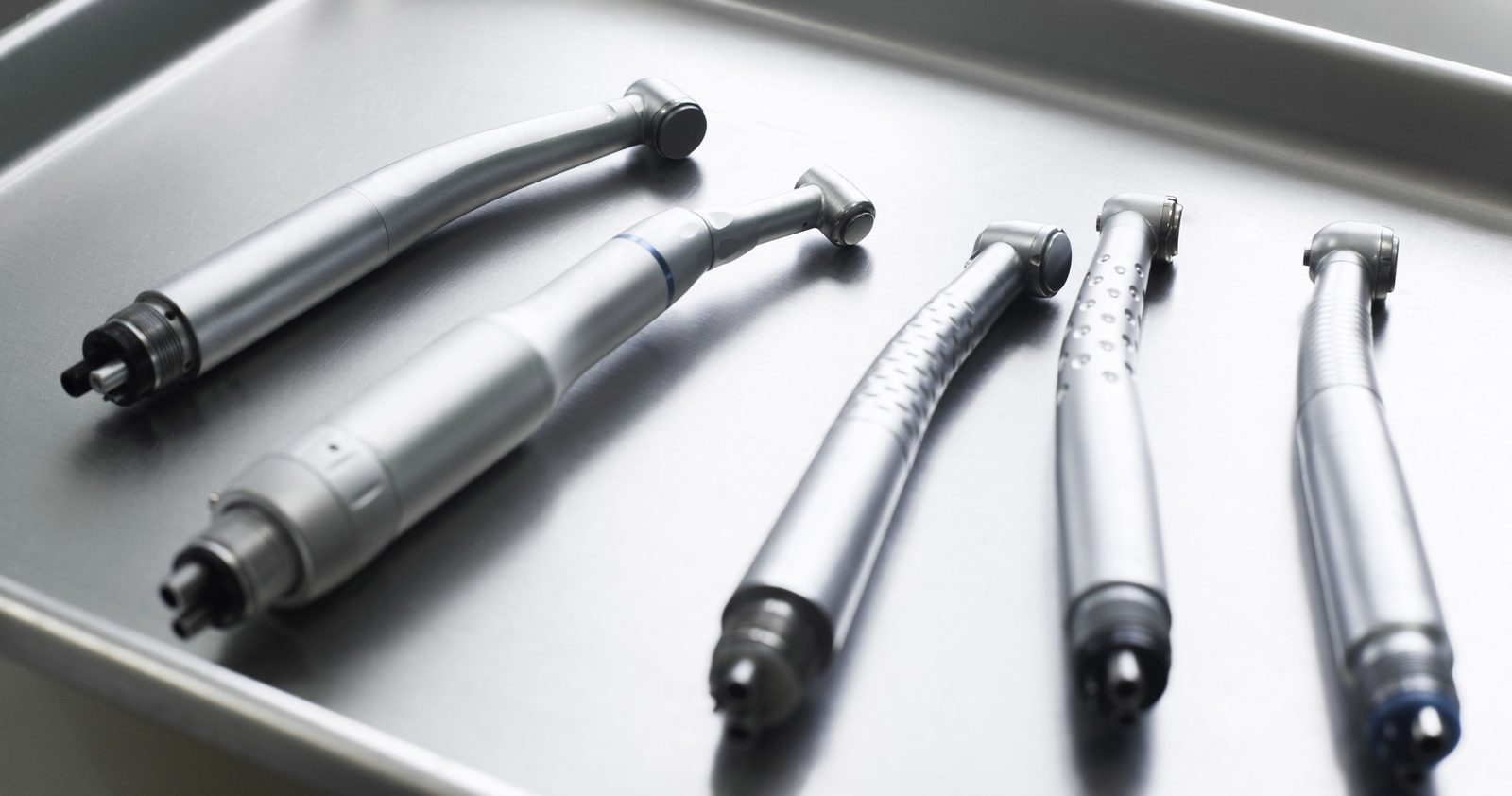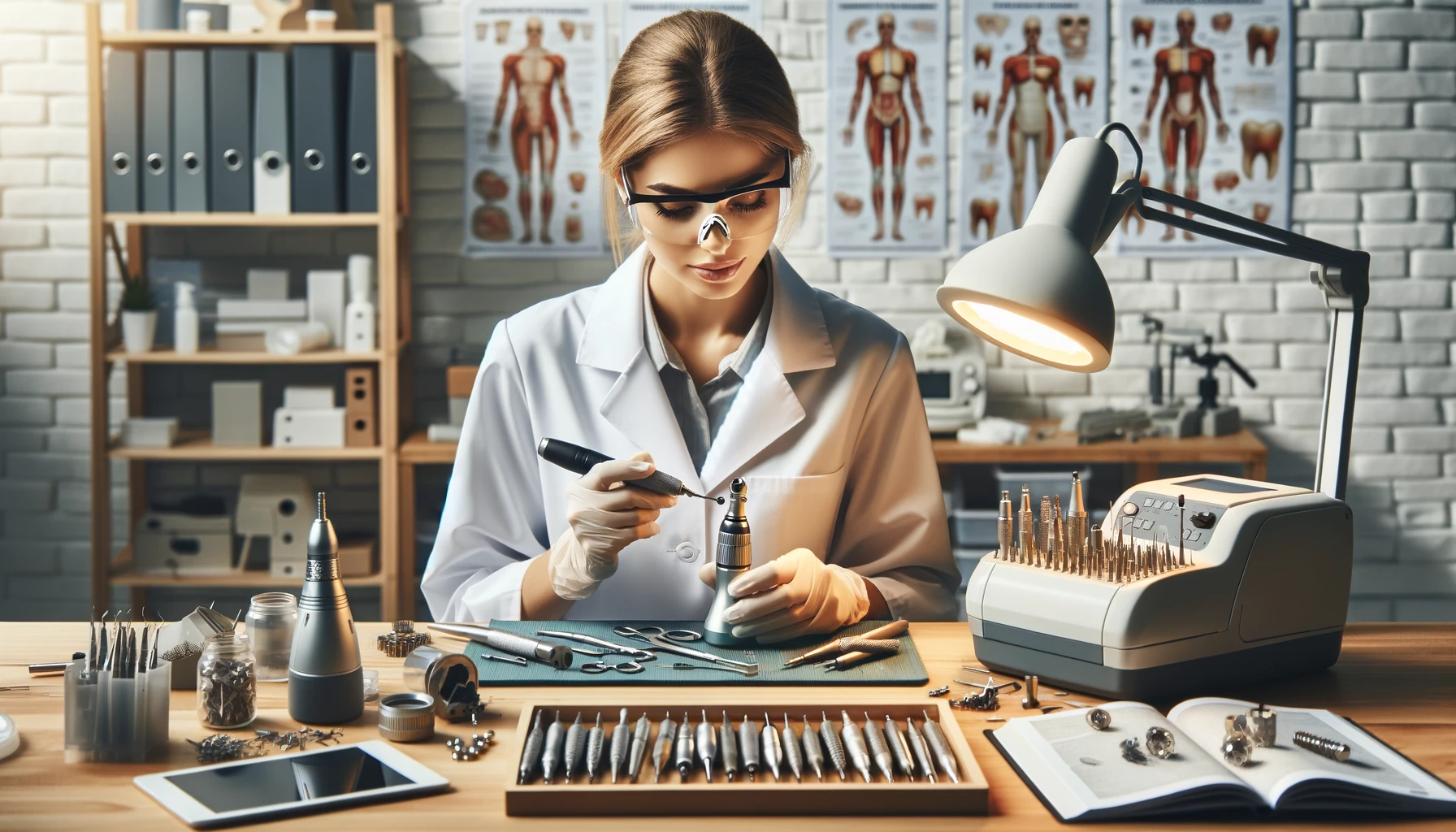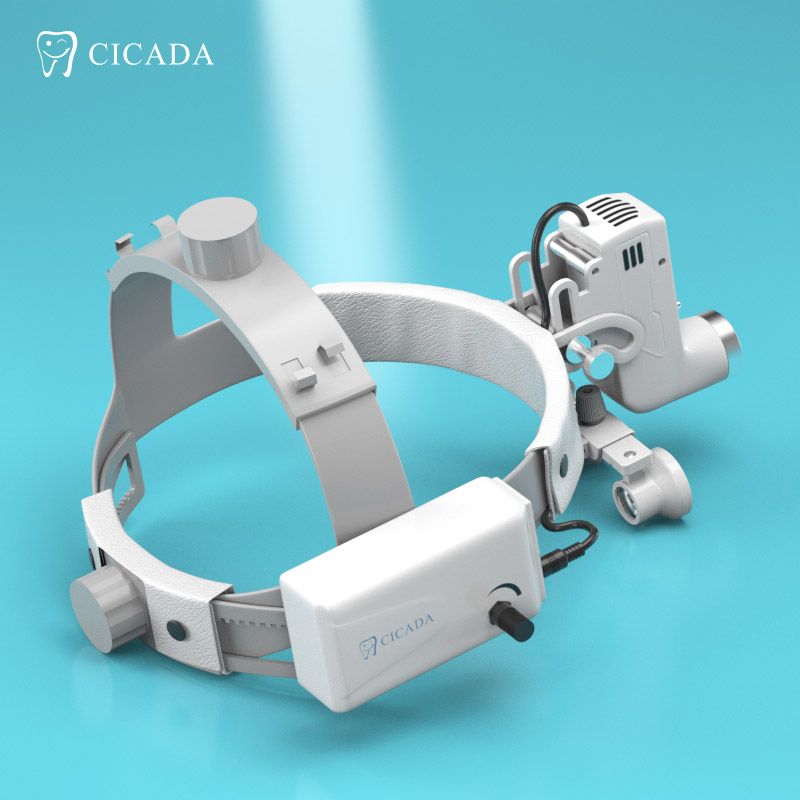In the ever-evolving landscape of modern dentistry, few innovations have had as profound an impact as the advent of dental curing lights. These unassuming yet powerful devices have revolutionized the way dental professionals approach a wide range of procedures, from routine fillings to complex restorations, ushering in a new era of precision, efficiency, and patient-centric care.
At the heart of this technology lies a simple yet ingenious concept: the ability to rapidly cure and harden light-sensitive dental materials using high-intensity light sources. By harnessing the power of specific wavelengths, curing lights initiate a photochemical reaction that transforms liquid or semi-solid dental composites into durable, long-lasting restorations in a matter of seconds.
The Photochemical Reaction: Unlocking the Power of Light
Dental composites and adhesives are formulated with light-sensitive compounds known as photoinitiators. When exposed to specific wavelengths of light, typically in the blue or near-ultraviolet range, these photoinitiators undergo a chemical reaction that triggers the polymerization process. This process transforms the liquid or semi-solid composite into a hardened, cross-linked polymer matrix, effectively “curing” the material in place.

Early curing lights relied on halogen bulbs or plasma arc lamps, which emitted a broad spectrum of visible and ultraviolet light. However, modern dental practices have largely embraced the superior efficiency and precision of light-emitting diode (LED) technology. LED curing lights emit a narrow band of blue light, typically centered around 460-470 nanometers, which aligns perfectly with the absorption spectra of most commonly used photoinitiators.
By precisely targeting the optimal wavelengths, LED curing lights minimize energy waste and reduce the risk of overheating or premature curing, ensuring a controlled and consistent polymerization process every time.
A Versatile Tool: Applications in Dentistry
The versatility of dental curing lights is truly remarkable, with applications spanning a wide range of procedures and treatments:
- Composite Fillings: Curing lights are essential for the placement of tooth-colored composite resin fillings, ensuring proper hardening and adhesion of each layer.
- Dental Bonding: Curing lights play a crucial role in bonding procedures, facilitating the application of composite resin for repairing chips, closing gaps, or changing the shape and color of teeth.
- Veneers and Crowns: In cosmetic dentistry, curing lights are vital for the placement of veneers and crowns, enhancing the appearance and durability of restorations.
- Orthodontic Treatments: Curing lights find applications in orthodontics, particularly in bonding brackets and appliances to teeth for effective tooth movement and alignment.
- Dental Sealants: Preventive dentistry benefits from curing lights, which are used to create protective barriers against decay-causing bacteria and food particles on the chewing surfaces of molars and premolars.
- Whitening Treatments: Some whitening systems rely on light-activated gels or solutions that are cured using dental lights, accelerating the whitening process and enhancing overall results.
Illuminating the Benefits: Precision, Efficiency, and Patient Comfort
The widespread adoption of curing lights in dental practices is a testament to the numerous benefits they offer, both for dental professionals and patients alike:
- Improved Efficiency: By rapidly curing dental materials in seconds, curing lights significantly reduce chair time, allowing dental professionals to streamline workflows and increase productivity.
- Enhanced Precision and Control: Modern LED curing lights offer unparalleled precision and control over the curing process, ensuring optimal results with minimal risk of over- or under-curing.
- Superior Aesthetic Outcomes: Curing lights have paved the way for the widespread use of tooth-colored composite resins, which seamlessly blend with natural tooth structure, enhancing the appearance of smiles and boosting patient confidence.
- Minimally Invasive Dentistry: By enabling the use of composite resins and adhesive materials, curing lights allow for minimally invasive restorations, preserving more natural tooth structure and reducing the need for extensive drilling or removal of healthy tooth material.
- Improved Patient Comfort: The rapid curing process facilitated by these lights translates to shorter procedure times, reducing patient discomfort and the risk of fatigue during dental treatments.
- Environmental Sustainability: Compared to traditional curing methods, curing lights offer a more environmentally friendly approach by eliminating the need for potentially harmful chemicals or excessive energy consumption.
Safety Considerations: Best Practices and Precautions
While curing lights offer numerous benefits, their safe and effective use is of paramount importance to ensure the well-being of both dental professionals and patients. Here are some key considerations and best practices:
- Eye Protection: The high-intensity light emitted by curing lights can pose a risk of eye damage, particularly to the retina. Dental professionals and patients must wear appropriate eye protection, such as UV-blocking glasses or face shields, during curing procedures.
- Skin Protection: Prolonged exposure to light from curing lights can potentially cause skin irritation or burns. Dental professionals should take precautions to cover exposed skin areas and ensure adequate protection for patients during curing procedures.
- Proper Curing Technique: Adhering to recommended curing techniques, including maintaining the appropriate distance and angle between the curing light tip and the restoration, as well as following manufacturer-recommended exposure times and intensity settings, is crucial for achieving optimal results and minimizing potential risks.
- Regular Maintenance and Calibration: Like any dental equipment, curing lights require regular maintenance and calibration to ensure consistent performance and accuracy. Dental practices should establish routine maintenance schedules and periodically check the irradiance levels of their curing lights.
- Staff Training: Comprehensive staff training on the proper use, safety protocols, and maintenance of curing lights is essential for ensuring the safe and effective implementation of this technology in the dental practice.
By prioritizing safety and adhering to best practices, dental professionals can harness the full potential of curing lights while minimizing risks and ensuring the highest standards of patient care.
Illuminating the Future: Advancements and Emerging Trends
The field of dental curing lights is constantly evolving, driven by ongoing research and technological advancements. As we look towards the future, several exciting developments are on the horizon, promising to further enhance the precision, efficiency, and versatility of these devices:
- Improved LED Technology: Ongoing advancements in LED technology are paving the way for curing lights with even higher irradiance levels, broader wavelength ranges, and improved energy efficiency, enabling faster curing times, better compatibility with a wider range of dental materials, and reduced energy consumption.
- Smart Curing Systems: The integration of smart technology and artificial intelligence (AI) into curing light systems is an emerging trend that promises to revolutionize the curing process. These intelligent systems can automatically adjust light intensity, exposure time, and wavelengths based on real-time feedback from sensors, ensuring optimal curing for each specific material and procedure.
- Wireless and Cordless Designs: As dental practices strive for greater mobility and flexibility, the demand for wireless and cordless curing light designs is on the rise. These innovative designs enhance ergonomics, ease of use, and overall safety by eliminating potential hazards associated with tangled cords.
- Dual-Wavelength Curing: Researchers are exploring the potential of dual-wavelength curing systems, which combine two different light sources to initiate polymerization through multiple pathways. This approach could lead to more efficient and uniform curing, as well as improved compatibility with a broader range of dental materials and photoinitiators.
- Integrated Diagnostic Tools: The future may see the integration of diagnostic tools, such as curing light meters or spectroscopic sensors, directly into curing light systems. These integrated tools would allow dental professionals to monitor and evaluate the curing process in real-time, ensuring optimal polymerization and identifying potential issues before they can compromise the integrity of the restoration.
As the field of dentistry continues to evolve, the role of curing lights will undoubtedly become even more pivotal, driving advancements in restorative techniques, patient comfort, and overall treatment outcomes.
The Patient Experience: Enhancing Comfort and Confidence
While the technical aspects of curing lights are undoubtedly impressive, it is their impact on the patient experience that truly sets them apart. By enabling minimally invasive procedures and delivering superior aesthetic results, these devices have revolutionized the way patients perceive and approach dental care.
- Reduced Anxiety and Discomfort: Curing lights have significantly reduced the anxiety and discomfort associated with dental procedures by enabling minimally invasive techniques, shorter treatment times, and a more comfortable overall experience.
- Improved Aesthetics and Confidence: The ability of curing lights to facilitate the use of tooth-colored composite resins has had a profound impact on patients’ self-confidence and overall well-being. Seamlessly blended restorations allow patients to engage in social and professional settings with renewed confidence and a radiant, natural-looking smile.
- Personalized Treatment Plans: The precision and control offered by modern curing lights have enabled dental professionals to develop more personalized treatment plans tailored to each patient’s unique needs and preferences, fostering a stronger sense of trust and collaboration between patients and their dental care providers.
By prioritizing patient comfort, aesthetics, and personalized care, curing lights have not only transformed the technical aspects of dental procedures but have also redefined the overall patient experience, making dental care more accessible, comfortable, and confidence-boosting.
Cost and Maintenance Considerations
While the benefits of curing lights are undeniable, it is essential for dental practices to carefully consider the associated costs and maintenance requirements to ensure a successful and sustainable implementation of this technology:
- Upfront Costs: The initial investment in high-quality curing lights can be substantial, with top-of-the-line LED models often costing several thousand dollars. However, this investment should be viewed as a long-term commitment to providing exceptional patient care and staying ahead of the curve in dental technology.
- Operating Costs: In addition to the initial purchase price, dental practices must also consider the ongoing operating costs associated with curing lights, including replacement bulbs or LED modules, batteries for cordless models, and regular maintenance and calibration services.
- Maintenance and Calibration: Regular maintenance and calibration are crucial for ensuring the consistent and accurate performance of curing lights. Failure to adhere to recommended maintenance schedules can lead to premature equipment failure, inconsistent curing results, and potential safety risks.
- Staff Training and Compliance: Investing in comprehensive staff training is another essential aspect of successfully implementing curing light technology in a dental practice. Proper training not only ensures that the equipment is used safely and effectively but also helps to maintain compliance with industry regulations and best practices.
By carefully considering these cost and maintenance factors, dental practices can make informed decisions about their investment in curing light technology, ensuring a successful and sustainable implementation that delivers long-term benefits for both the practice and its patients.
Conclusion: Illuminating the Future of Dental Care
As we reflect on the remarkable journey of dental curing lights, it becomes evident that these devices have not only transformed the way we approach restorative procedures but have also ushered in a new era of patient-centric care, precision, and efficiency.
From the minimally invasive techniques they enable to the superior aesthetic outcomes they deliver, curing lights have redefined the dental experience for both professionals and patients alike. Their ability to rapidly cure and harden light-sensitive materials has streamlined workflows, reduced chair time, and opened the door to a world of seamlessly blended, natural-looking restorations.
As we look towards the future, the advancements on the horizon promise even greater precision, efficiency, and versatility. Smart curing systems, dual-wavelength technologies, and integrated diagnostic tools are just a few of the exciting developments that will further enhance the capabilities of these remarkable devices, pushing the boundaries of what is possible in modern dentistry.
However, amidst the technological advancements, it is crucial to remember that the safe and effective use of curing lights remains paramount. By prioritizing eye and skin protection, adhering to proper curing techniques, and ensuring regular maintenance and staff training, dental professionals can harness the full potential of this technology while safeguarding the well-being of both themselves and their patients.
In the ever-evolving landscape of dentistry, curing lights stand as a testament to the power of innovation and the relentless pursuit of better oral health outcomes. As we continue to embrace these advancements, we move closer to a future where dental care is not only more efficient and precise but also more comfortable, aesthetically pleasing, and accessible to all.
So, whether you are a dental professional seeking to enhance your practice or a patient eager to experience the benefits of cutting-edge restorative techniques, the world of dental curing lights promises to illuminate the path to better oral health, one brilliant smile at a time.
What is a curing light in dentistry?
A curing light is a device used in dentistry to harden or cure resin-based materials. It works on the principle of photo polymerization, where light energy is used to convert the resin from a liquid or pliable state into a hardened state.
How do curing lights work?
Curing lights work by emitting light at a specific wavelength that is absorbed by a photo initiator in the resin material. This initiates a chemical reaction that causes the resin to harden.
What are the benefits of using curing lights?
Curing lights offer several benefits, including increased efficiency, improved precision, and enhanced durability of dental restorations. They also contribute to shorter treatment times and improved patient comfort.
Are there any risks or precautions associated with using curing lights?
While curing lights are generally safe to use, there are potential risks and complications if they are not used correctly. These include thermal damage to the pulp, inadequate curing, and damage to the eyes. Therefore, dental professionals should always follow the manufacturer’s instructions and take necessary precautions when using curing lights.
Where can I find high-quality dental equipment, including curing lights?
You can find high-quality dental equipment, including curing lights, at Cicada Medical. We are a leading supplier of dental equipment and offer a wide range of products to meet your needs. Visit our website to learn more.




